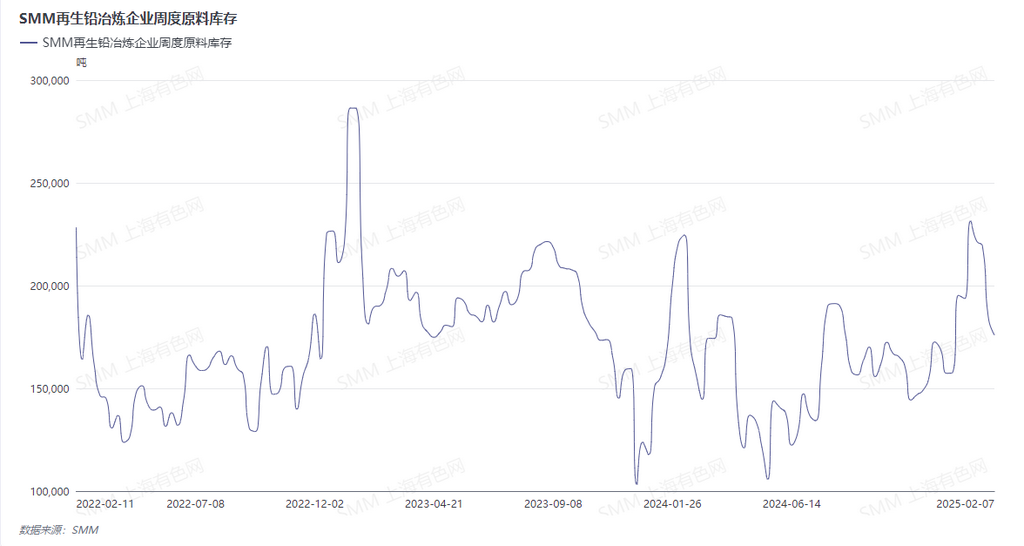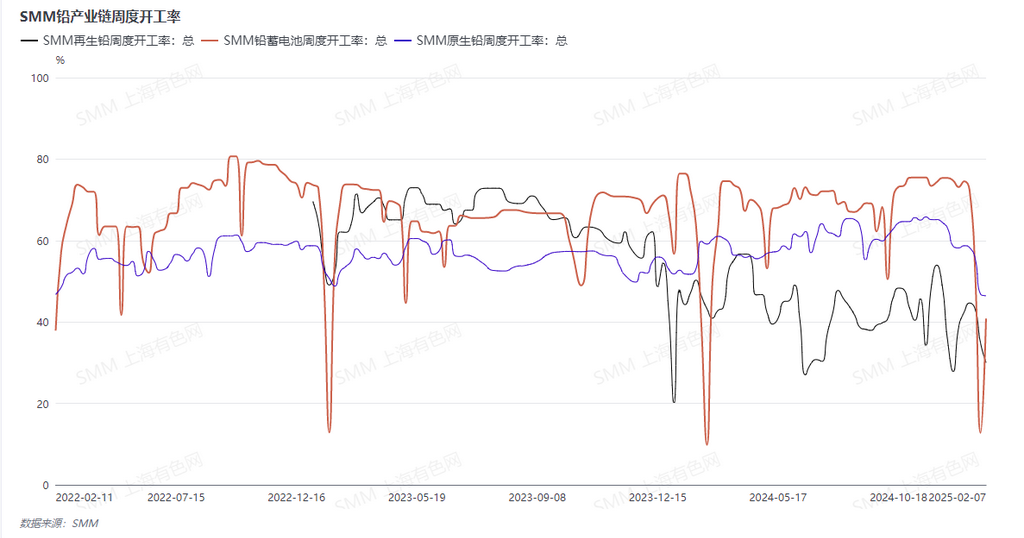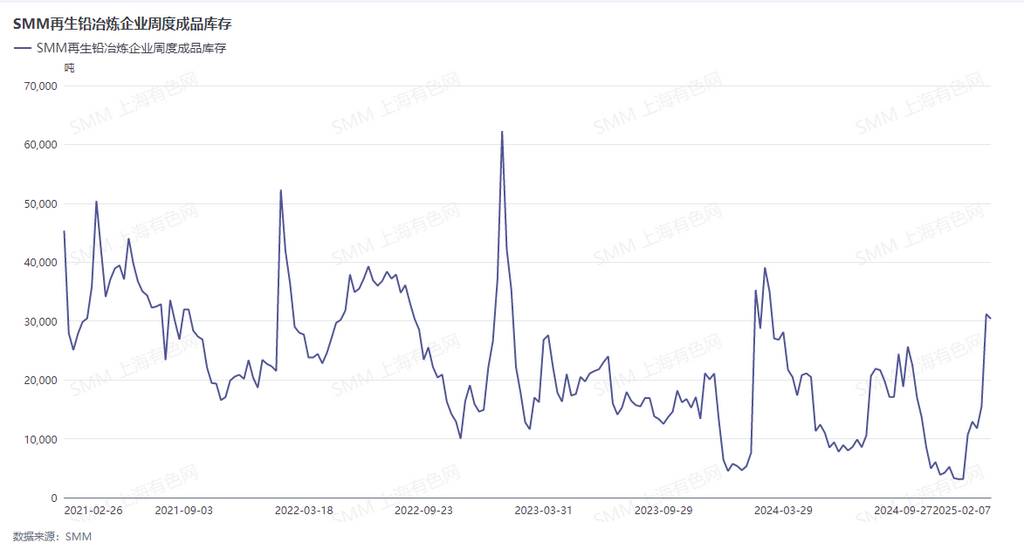






》View SMM Lead Product Prices, Data, and Market Analysis
》Subscribe to Access SMM Historical Spot Metal Prices
》Click to Access the SMM Database
SMM, February 7:
During the Chinese New Year holiday, secondary lead smelters faced dual challenges of declining raw material inventories and increasing finished product inventories. As battery scrap recyclers and EV stores generally went on holiday, transactions in the battery scrap market essentially came to a halt, leading to a significant reduction in raw material supply. Those secondary lead smelters that continued production during the holiday had to rely primarily on pre-holiday raw material inventories, directly causing a noticeable decline in raw material stocks.

Meanwhile, as logistics and transportation were also in holiday mode, transportation capacity dropped significantly, further limiting the timely replenishment of raw materials. This exacerbated the pressure on smelters to secure raw materials, making the downward trend in raw material inventories even more pronounced. Some secondary lead smelters, facing critical shortages of raw material inventories during the holiday, were forced to cut production, resulting in a severe decline in regional operating rates.

On the other hand, downstream battery producers were mostly on holiday, leading to extremely low demand for lead ingots. This caused the finished products produced by secondary lead smelters to remain unsold, resulting in a significant accumulation of finished product inventories. The increase in finished product inventories not only tied up corporate funds and storage space but also posed certain challenges to post-holiday market price stability.

In summary, the decline in raw material inventories and the increase in finished product inventories at secondary lead smelters during the Chinese New Year holiday were the combined result of reduced market demand, supply chain disruptions, and logistical constraints. This phenomenon highlights the impact of holidays on the operations of the secondary lead industry and underscores the need for companies to better plan production and inventory management during holiday periods to adapt to market changes.
For queries, please contact William Gu at williamgu@smm.cn
For more information on how to access our research reports, please email service.en@smm.cn